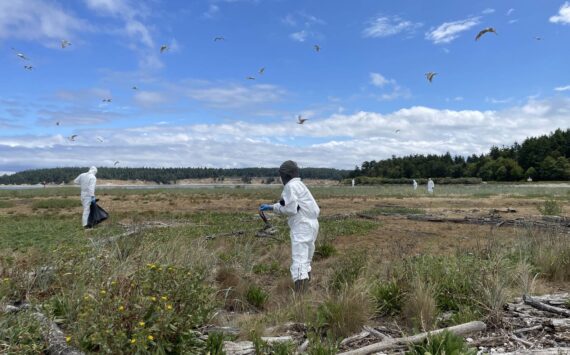Washingtons seasonally adjusted unemployment rate rose two-tenths of a percentage point to 6.2 percent in August, Employment Security Commissioner Sylvia P. Mundy announced yesterday.
The comparable national rate declined by one-tenth of a percentage point to 5.4 percent. Washingtons non-adjusted unemployment rate declined to 5.9 percent from a revised 6.0 percent in July.
The civilian labor force declined by 42,800 as both the number of employed and unemployed workers fell, Mundy said. The nonagricultural wage and salary employment estimates fell by 4,500 in August.
However, the civilian labor force was up 15,400 on a seasonally adjusted basis as the decline in the labor force was less pronounced than expected.
The increase in seasonally adjusted employment and unemployment was 10,500 and 4,900, respectively.
Employment in manufacturing increased by 900 with most of that resulting from increased activities in the food manufacturing sub sector.
Construction employment rose by 3,700 as the building industry moved to its seasonal high.
Local government education services hit a seasonal low as 15,600 non-teaching staff were laid off for the summer months.
Retail trade had a respectable over-the-month increase of 700 workers in spite of lackluster sales resulting from slow wage growth, high gasoline prices, and less back-to-school spending in August.
Employment rose by 2,100 in the leisure and hospitality industries due to increased seasonal and weather-related activities such as baseball, golf, boating, traveling, and outdoor dining.
However, the increase was not as much as occurred at this time last year. Likewise, employment services added 1,800 workers over the month, which was 1,300 less than were added last year between July and August.
Over the year, nonagricultural employment gained 50,700 jobs, compared to August 2003.
The largest over-the-year employment gains have occurred in construction (8,600); retail trade (6,700), with much of that in general merchandise, food and beverage stores; information (5,000), which includes software publishing; professional and business services (11,100), with much of that occurring in administrative and support services (7,300); and education and health services (6,700), with most of that increase in ambulatory health care services.
The only major industry sector that lost employment over the year was manufacturing with a loss of 2,800 workers mostly from the aerospace products and parts sub sector.
But the seasonally adjusted nonagricultural wage and salary employment dropped by about 6,800.
That indicates the actual drop in employment was more than what would be expected considering seasonal factors.




